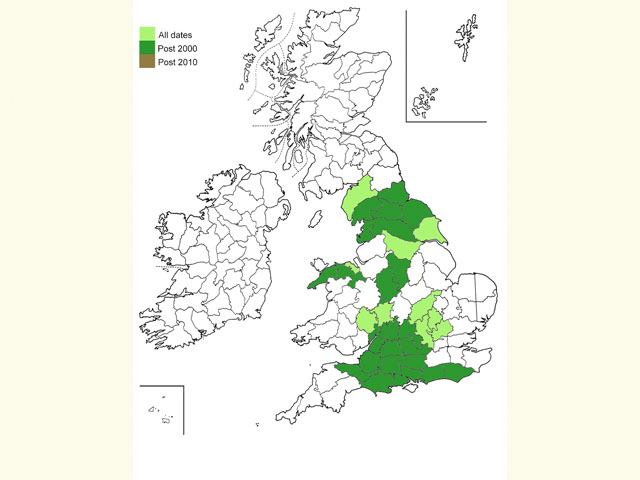Zygaenidae
54.003 Cistus Forester Adscita geryon (Hübner, [1813])
Notable B
Similar species: Scarce Forester Jordanita globulariae is larger (M 12 to 15mm, F 10 to 12mm). The males have 3 or less merged segments at the tip of the antennae. The females antennae are almost parallel sided and do not thicken towards the tip. Forester Adscita statices is larger (M 12 to 15mm, F 11 to 13mm). The males have 9 to 11 merged segments at the tip of the antennae. The females antennae thicken towards the tip.
Forewing: M 10 to 12mm, F 9 to 10mm
Habitats: South-facing, calcareous and herb-rich grassland with a short to medium height sward.
Habits: The moth visits a wide variety of flowers. The female spends a lot of time perched on grass stems while the male flies actively in sunshine.
Foodplant: The larva initially forms a blotch mine on a leaf of Common Rock-rose, then after a month it feeds on the underside of a leaf. It overwinters low down in the vegetation and feeds again in the spring until early May. It pupates in a cocoon concealed at soil level.




